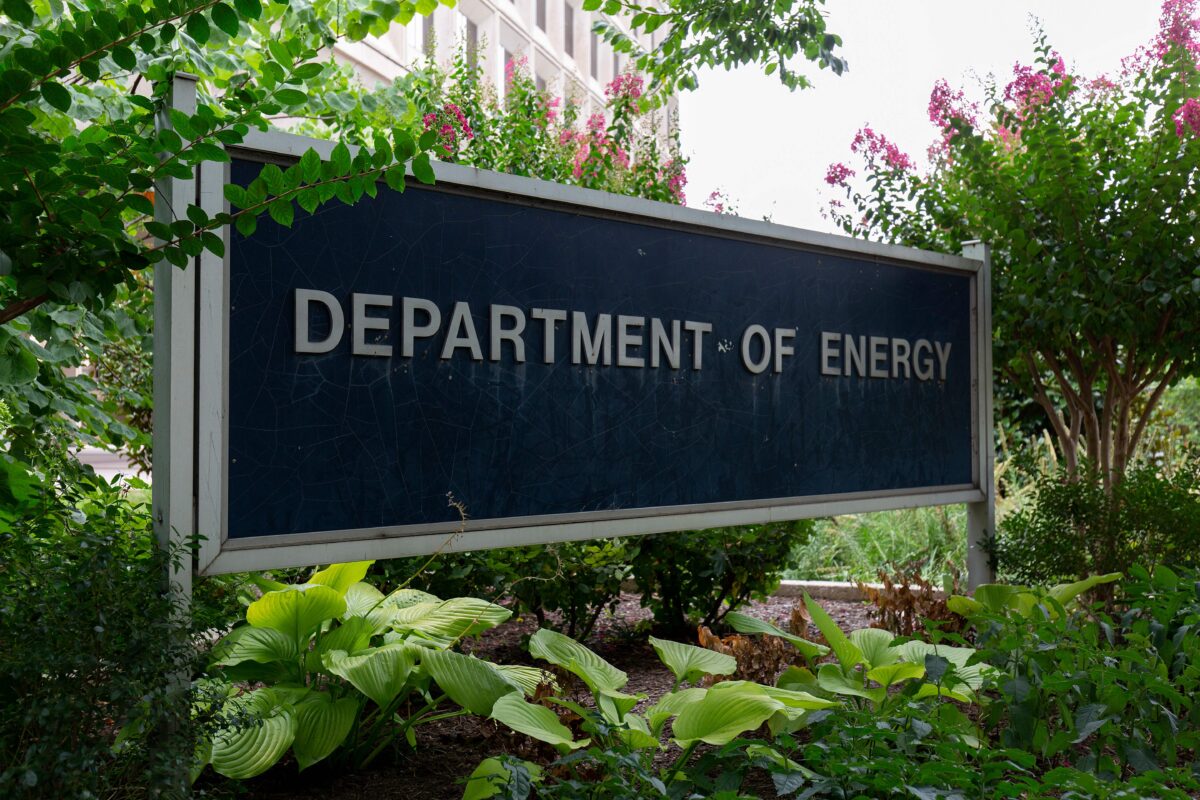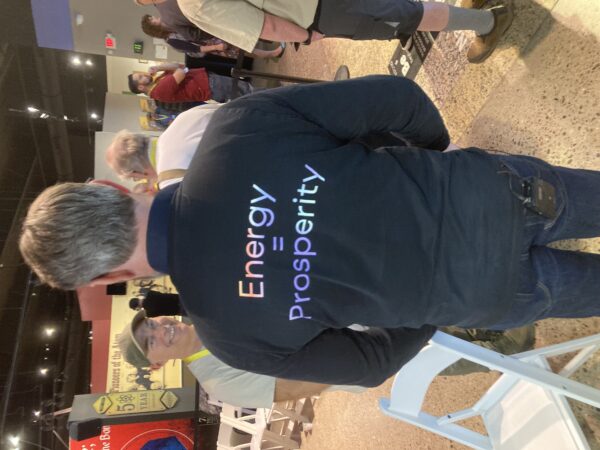Thorium Innovators Vie for Success
More than half a century after physicist Alvin Weinberg first demonstrated a thorium molten-salt reactor at Oak Ridge National Laboratory, a global thorium renaissance may be underway.At least that’s what the Thorium Energy Alliance (TEA) hopes. TEA’s eleventh conference, held in Albuquerque, New Mexico, brought together engineers, entrepreneurs, and enthusiasts who believe thorium reactors could become a safer, generally superior alternative to conventional light-water nuclear reactors—though not overnight. The crowd listens at the 2022 Thorium Energy Alliance Conference in the National Museum of Nuclear Science & History in Albuquerque, New Mexico. (Scott Medwid) TEA and its allies argue that the light-water reactor industry and Cold War-era pressures to focus on weapons slowed early progress on thorium. Later on, according to Department of Energy veteran Ed McGinnis, tight federal budgets forced that agency’s leaders to focus on uranium and kick thorium to the curb. The choice was “a difficult if not Machiavellian decision,” McGinnis told The Epoch Times in an Oct. 13 interview. Appropriately enough, the men and women seeking to resurrect a technology from mid-twentieth century America met in a shrine to the nation’s first Atomic Age–Albuquerque’s National Museum of Nuclear Science & History. The Sandia Peak Tramway takes visitors high above dramatic terrain. Sunset is especially beautiful from the observation deck atop Sandia Peak. (The Image Bank/Getty) The museum lies near the foot of the Sandia Mountains, where subdivisions and fast food joints start giving way to the vast Chihuahuan Desert. It’s also just a mile down the road from Sandia National Laboratories, still a hub of nuclear weapons research. (The museum used to belong to Sandia.) TEA’s attendees ranged from professors and nuclear industry professionals to online content creators and thorium megafans (the sort of people that legacy publications now casually disparage as ‘nuclear bros’). Depending on how the next few years play out, they may also have included people who will create the first functioning thorium molten-salt reactor since Oak Ridge shut theirs down in 1969. A Texan With a TED Talk, a Dane With a Dream One such innovator is Rusty Towell, a physics professor at Texas’s Abilene Christian University who spent time in the nuclear Navy. Earlier this year, Towell and his team applied for a permit with the Nuclear Regulatory Commission. “We are saying we can go critical in 2025 if we get a timely review,” he told The Epoch Times in an Oct. 14 interview. He and his colleagues want to place a molten-salt research reactor underneath a future Science and Engineering Research Center, now under construction at Abilene Christian. Towell said he first became interested in thorium about 10 years ago; a faculty colleague, physics professor Charles Ivey, recommended he read “Thorium: Energy Cheaper than Coal” by Robert Hargraves. Inspired, he eventually delivered a TEDx talk about thorium’s untapped potential at Abilene Christian. “That got a group of local donors and supporters excited,” he said. Towell was ready to go. By 2019, the Department of Energy had committed to providing fuel for his prospective reactor. The Department of Energy building in Washington, on July 22, 2019. (Alastair Pike/AFP via Getty Images) Although his molten-salt project has received government grants, most funding comes from third-generation Texas oilman Doug Robison’s Natura Resources. Natura Resources is also behind a larger nuclear research alliance that brings together Abilene Christian, Texas A&M University, the Georgia Institute of Technology, and the University of Texas at Austin. Yet, thorium-based fuels are not limited to molten-salt reactors. Towell said his platform was not necessarily at odds with a non-molten salt thorium reactor design presented at TEA 11, a Canadian Deuterium Uranium (CANDU) reactor being developed by a Chicago-based company, Clean Core. Mark Nelson, who spoke on behalf of Clean Core at the meeting, told The Epoch Times on Oct. 13 that profitable thorium reactors are not likely to appear within the next decade except in the form of a heavy-water reactor like CANDU. “There’s space in the world for more than one reactor design,” Towell said before outlining some differences between CANDU and his platform: “They [CANDUs] don’t produce high-[temperature] process heat that industries need, and they don’t produce medical isotopes, so there’s limitations on what they can do.” By contrast, a big selling point of his molten-salt thorium reactor design is that it could eventually create isotopes that can be used to launch precision strikes against cancer cells. Thorium molten-salt reactors may also enable large-scale heating. Towell believes the barriers to deploying thorium reactor technology are chiefly regulatory rather than scientific or technological. After all, Oak Ridge already did it. An aerial view of the

More than half a century after physicist Alvin Weinberg first demonstrated a thorium molten-salt reactor at Oak Ridge National Laboratory, a global thorium renaissance may be underway.
At least that’s what the Thorium Energy Alliance (TEA) hopes. TEA’s eleventh conference, held in Albuquerque, New Mexico, brought together engineers, entrepreneurs, and enthusiasts who believe thorium reactors could become a safer, generally superior alternative to conventional light-water nuclear reactors—though not overnight.

TEA and its allies argue that the light-water reactor industry and Cold War-era pressures to focus on weapons slowed early progress on thorium. Later on, according to Department of Energy veteran Ed McGinnis, tight federal budgets forced that agency’s leaders to focus on uranium and kick thorium to the curb.
The choice was “a difficult if not Machiavellian decision,” McGinnis told The Epoch Times in an Oct. 13 interview.
Appropriately enough, the men and women seeking to resurrect a technology from mid-twentieth century America met in a shrine to the nation’s first Atomic Age–Albuquerque’s National Museum of Nuclear Science & History.

The museum lies near the foot of the Sandia Mountains, where subdivisions and fast food joints start giving way to the vast Chihuahuan Desert. It’s also just a mile down the road from Sandia National Laboratories, still a hub of nuclear weapons research. (The museum used to belong to Sandia.)
TEA’s attendees ranged from professors and nuclear industry professionals to online content creators and thorium megafans (the sort of people that legacy publications now casually disparage as ‘nuclear bros’).
Depending on how the next few years play out, they may also have included people who will create the first functioning thorium molten-salt reactor since Oak Ridge shut theirs down in 1969.
A Texan With a TED Talk, a Dane With a Dream
One such innovator is Rusty Towell, a physics professor at Texas’s Abilene Christian University who spent time in the nuclear Navy.
Earlier this year, Towell and his team applied for a permit with the Nuclear Regulatory Commission.
“We are saying we can go critical in 2025 if we get a timely review,” he told The Epoch Times in an Oct. 14 interview.
He and his colleagues want to place a molten-salt research reactor underneath a future Science and Engineering Research Center, now under construction at Abilene Christian.
Towell said he first became interested in thorium about 10 years ago; a faculty colleague, physics professor Charles Ivey, recommended he read “Thorium: Energy Cheaper than Coal” by Robert Hargraves.
Inspired, he eventually delivered a TEDx talk about thorium’s untapped potential at Abilene Christian.
“That got a group of local donors and supporters excited,” he said. Towell was ready to go.
By 2019, the Department of Energy had committed to providing fuel for his prospective reactor.

Although his molten-salt project has received government grants, most funding comes from third-generation Texas oilman Doug Robison’s Natura Resources. Natura Resources is also behind a larger nuclear research alliance that brings together Abilene Christian, Texas A&M University, the Georgia Institute of Technology, and the University of Texas at Austin.
Yet, thorium-based fuels are not limited to molten-salt reactors.
Towell said his platform was not necessarily at odds with a non-molten salt thorium reactor design presented at TEA 11, a Canadian Deuterium Uranium (CANDU) reactor being developed by a Chicago-based company, Clean Core.
Mark Nelson, who spoke on behalf of Clean Core at the meeting, told The Epoch Times on Oct. 13 that profitable thorium reactors are not likely to appear within the next decade except in the form of a heavy-water reactor like CANDU.
“There’s space in the world for more than one reactor design,” Towell said before outlining some differences between CANDU and his platform:
“They [CANDUs] don’t produce high-[temperature] process heat that industries need, and they don’t produce medical isotopes, so there’s limitations on what they can do.”
By contrast, a big selling point of his molten-salt thorium reactor design is that it could eventually create isotopes that can be used to launch precision strikes against cancer cells. Thorium molten-salt reactors may also enable large-scale heating.
Towell believes the barriers to deploying thorium reactor technology are chiefly regulatory rather than scientific or technological. After all, Oak Ridge already did it.

“They built one of these reactors in the 60s. I’m very confident that we can do better things now than we could over 50 years ago,” Towell said.
He admits that the culture in the field may have also hampered the translation of theoretical advances to real-world tools. With science on the mind, it can be hard to think like an engineer.
“It’s very easy as a researcher to get sidetracked by all the fun little R&D projects,” he said.
Thomas Jam Pedersen, the co-founder of Copenhagen Atomics in Denmark, shares much of Towell’s optimism, as well as his perspective on the impediments to thorium today.
“It’s definitely regulation,” he told The Epoch Times in an Oct. 14 interview.
“There’s actually lots of money out there that wants to get into this area, but the investors are saying, ‘Hey, I don’t want you to spend my money educating politicians,'” he added. “They want to remove all that regulatory risk and political risk.”

Pedersen, an engineer, was skeptical when he first heard about thorium.
“I was like, this is some crazy internet story or something,” he said.
Yet he returned to the topic, performing calculations that satisfied his sense of the possible.
Over time, and after attending a few conferences, he realized that real progress could be made “in a small company, as long as you have some clever people who know what they’re doing.”
Like Towell at Abilene Christian, Pedersen is building a molten-salt reactor. Yet his company does not have a direct tie-in with any university or government. (It has, however, received grants from the Danish government and the European Union.)
“It’s not a university product,” Pedersen said.
So far, his company has specialized in producing molten salts, particularly fluoride salts. They’re using them for early-stage testing of their reactor.
Once they reach the point of testing a chain reaction, they won’t be running their experiments in Denmark. One reason: the country lacks a state agency to approve that sort of research.
“I don’t know exactly which country will be the best for us,” he said. Canada, the United States, and other European countries are all on the table.
Copenhagen Atomics aims to launch its first reactor in 2025.

Looking south to Germany, Pedersen sees the need for thorium all the more clearly. The country’s actions on energy, including its flight from nuclear, have set the stage for a frigid winter.
“The political leaders in Germany have done all the wrong things for 30 years and, of course, they’re gonna get their butts smacked now,” he said.
Pedersen does not dream small. He hopes to supply thorium energy to a billion people.
How many years will that take?
“It might happen just before I die,” he said.
Industry Reaction and Skepticism
Kari Austgen of the Nuclear Energy Institute, a Washington-based nuclear trade association, was also in the crowd at TEA’s conference.
She pointed out that alternatives to conventional reactors could potentially supply energy beyond electricity, a key concern for people hoping to curb the use of natural gas and other hydrocarbons that are currently essential for heating and similar applications.
“There is great ongoing work to revisit additional non-light-water reactor designs to meet not just our electricity needs, but also process heat for industry and combined heat and power for district energy users. Molten salt reactors, including some fueled by thorium, are among those designs seeing renewed interest,” Austgen told The Epoch Times in an Oct. 21 email.
She anticipates the earliest molten-salt reactors in widespread use will rely on uranium rather than thorium.
Thorium is still met with skepticism by many nuclear researchers and engineers. Some experts voiced their doubts after 2020 presidential candidate Andrew Yang praised thorium on the campaign trail.
Writing in the Bulletin of the Atomic Scientists, University of Tennessee nuclear engineering professor Nicholas Brown offered a ‘fact check’ of Yang’s claims about thorium.
(Thorium advocates have responded to that fact check, including through a July 2022 blog entry on the Thorium Network.)
The Epoch Times reached out to Brown for comment on some of the claims advanced by thorium’s staunchest supporters.
He responded in an Oct. 18 email by stating that he has “dozens of publications on nuclear fuel cycles, including a couple highly cited papers on thorium,” before declining an interview with The Epoch Times.
Brown also told The Epoch Times that uranium-233, a major isotope in the thorium reactor’s fuel cycle, “is not less risky than plutonium or uranium-235.”
“Absolutely not!” wrote John Kutsch, of the TEA, in an Oct. 20 email to The Epoch Times.

U-233 decays into U-232, which produces a hazardous, gamma-ray-emitting daughter, thallium-208.
U-233, Kutsch argued, is “bad for bombs, great for non-proliferation—use a tiny bit in your reactor, and everyone in the world will be able to keep an eye on your inventory.”
Uncertainty Clouds China’s Thorium Claims
America’s shifting attitude on nuclear power, thorium-based power possibly included, comes at a time of escalating competition with China.
China is believed to be building scores of new nuclear reactors at home and in other countries, such as Pakistan.
Researchers there are thought to be developing various advanced reactor designs, including a thorium molten-salt reactor. Some reporting has suggested the country is making very rapid strides with an experimental platform in Wuwei—like Albuquerque, a desert city (in its case, the Gobi rather than the Chihuahuan.)

Yet, some experts raise an eyebrow at the headlines heralding China’s thorium energy achievements.
“It’s hard to know exactly what’s going on in China,” said Towell, of Abilene Christian.
“I am also skeptical of some of the news that comes out,” said Pedersen, of Copenhagen Atomics.
He described some of the statements from the country as “incoherent” from a nuclear engineer’s perspective.
“I think this is state propaganda,” he added, speculating that bureaucrats are writing it instead of scientists.
Pedersen believes the Chinese are probably dealing with the same logistical problems as everyone else vying for success with thorium. (Other interested countries include India, which may have the largest thorium reserves on the planet.)
“All the other groups around the world have had problems getting their pumps working and getting their seals working and purifying the salts. And, of course, the Chinese have the same problems, no doubt about it,” he said.

In an Oct. 17 message to The Epoch Times, Nelson said he thinks China is doing a lot right regarding nuclear technology. He speculated that the thorium molten-salt reactor could simply prove inferior to other options.
“We’ll see,” he added.







